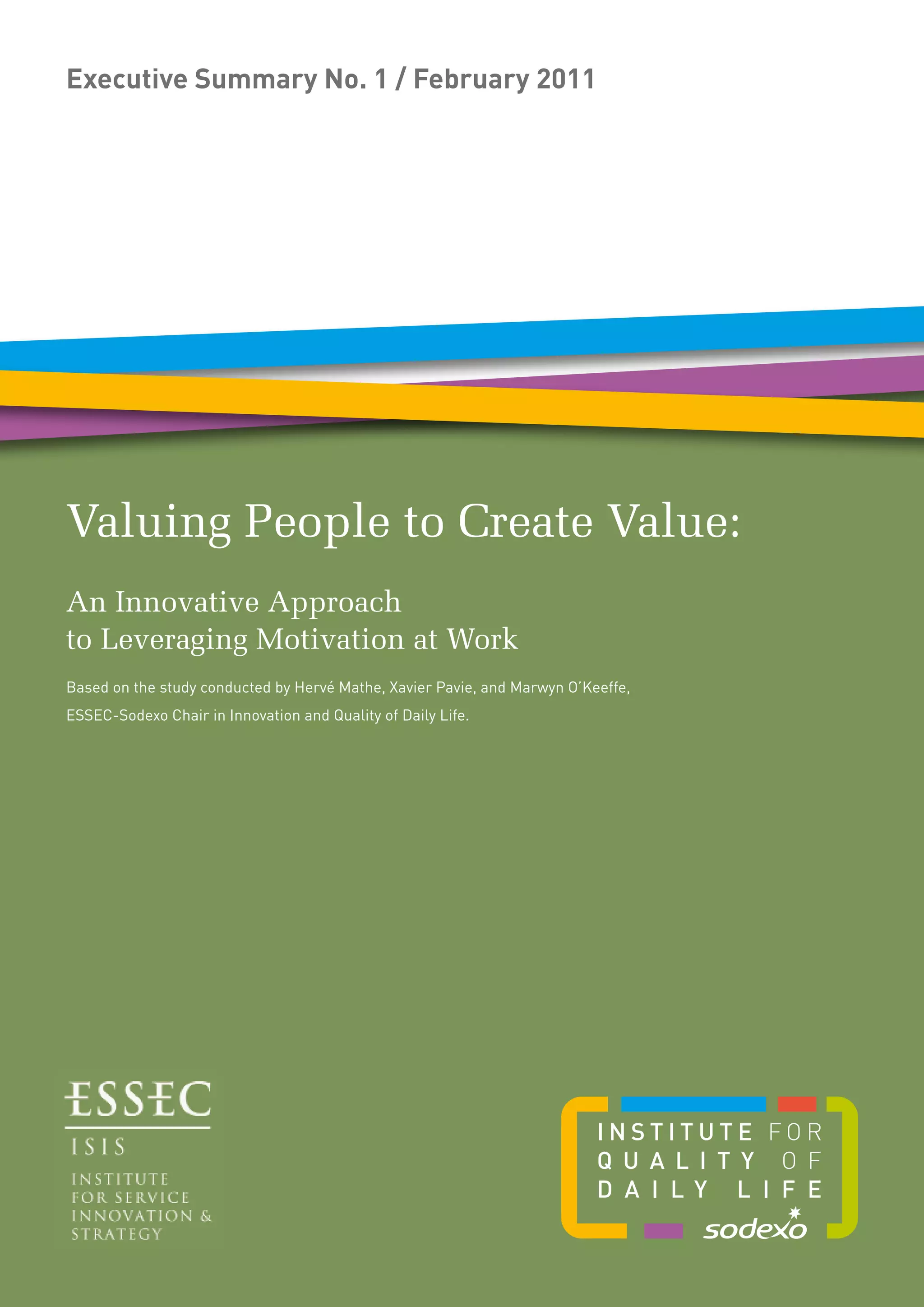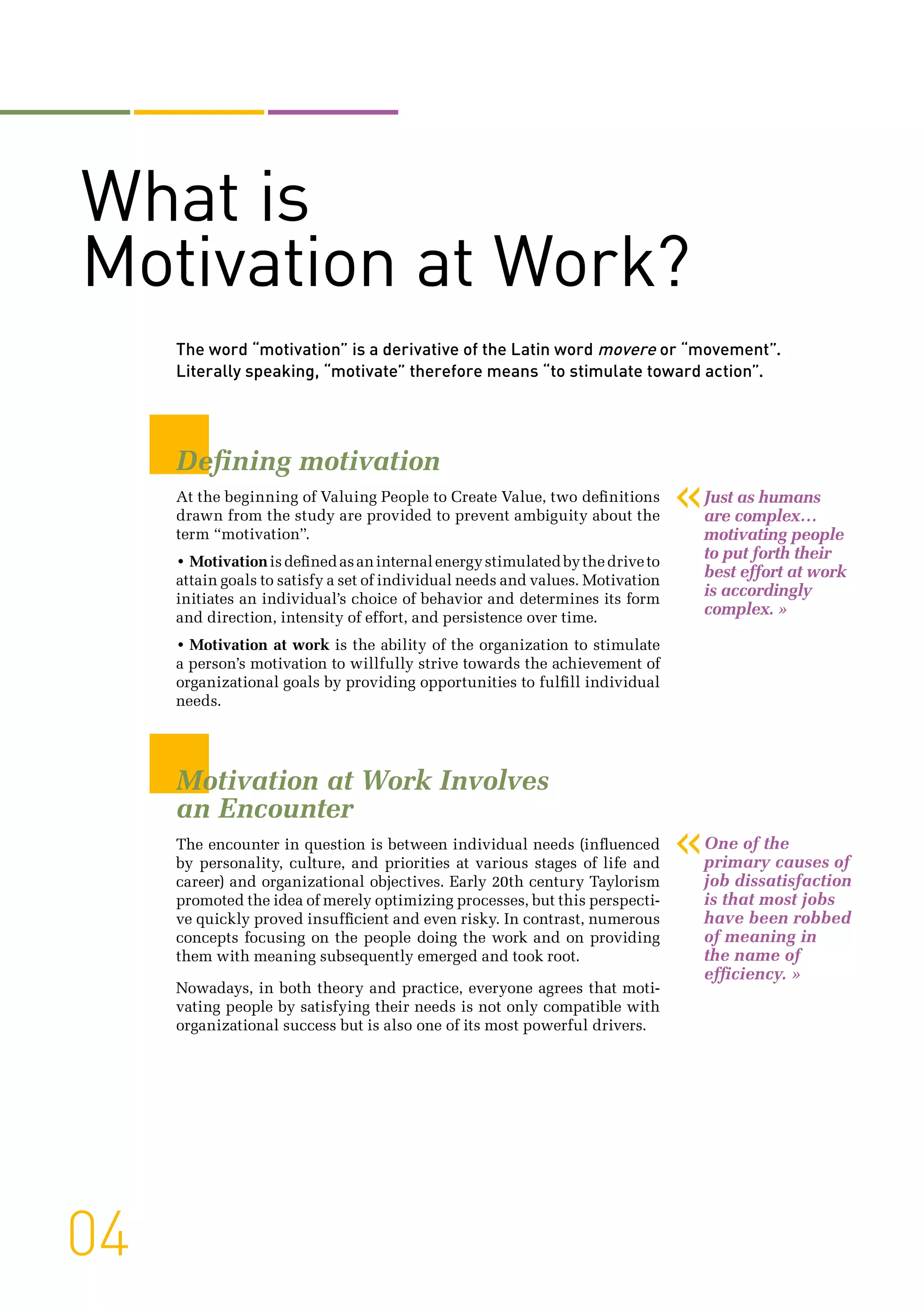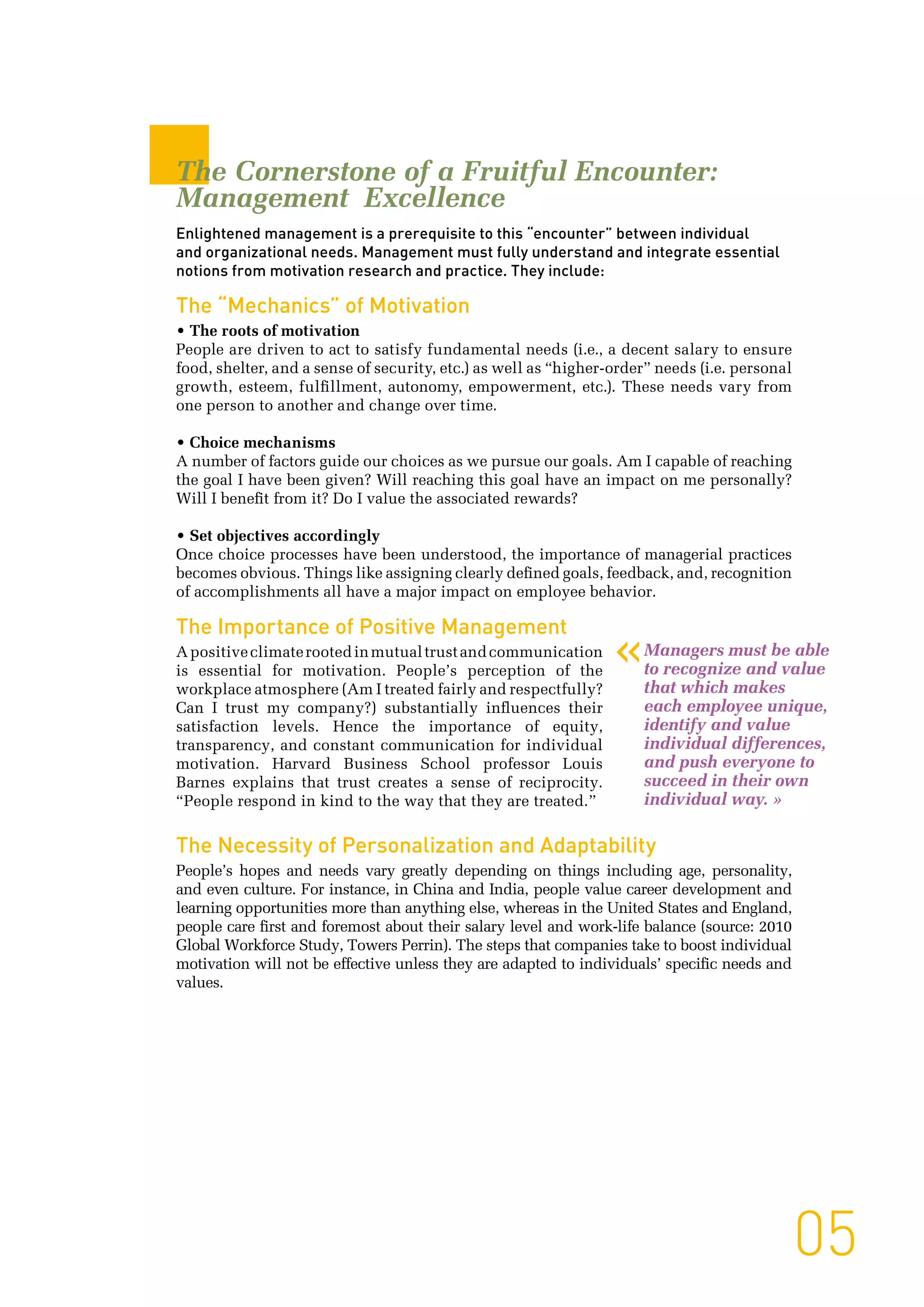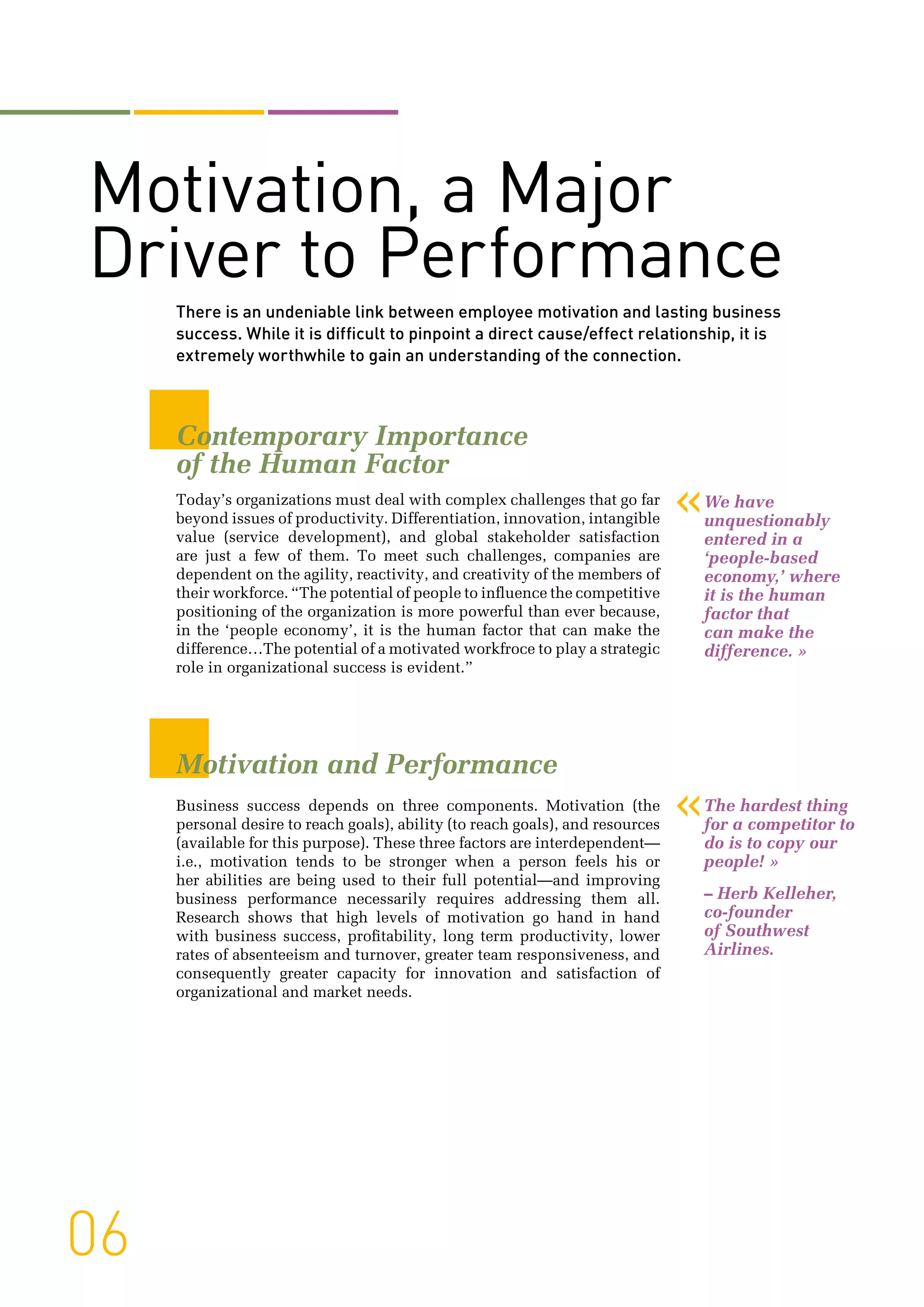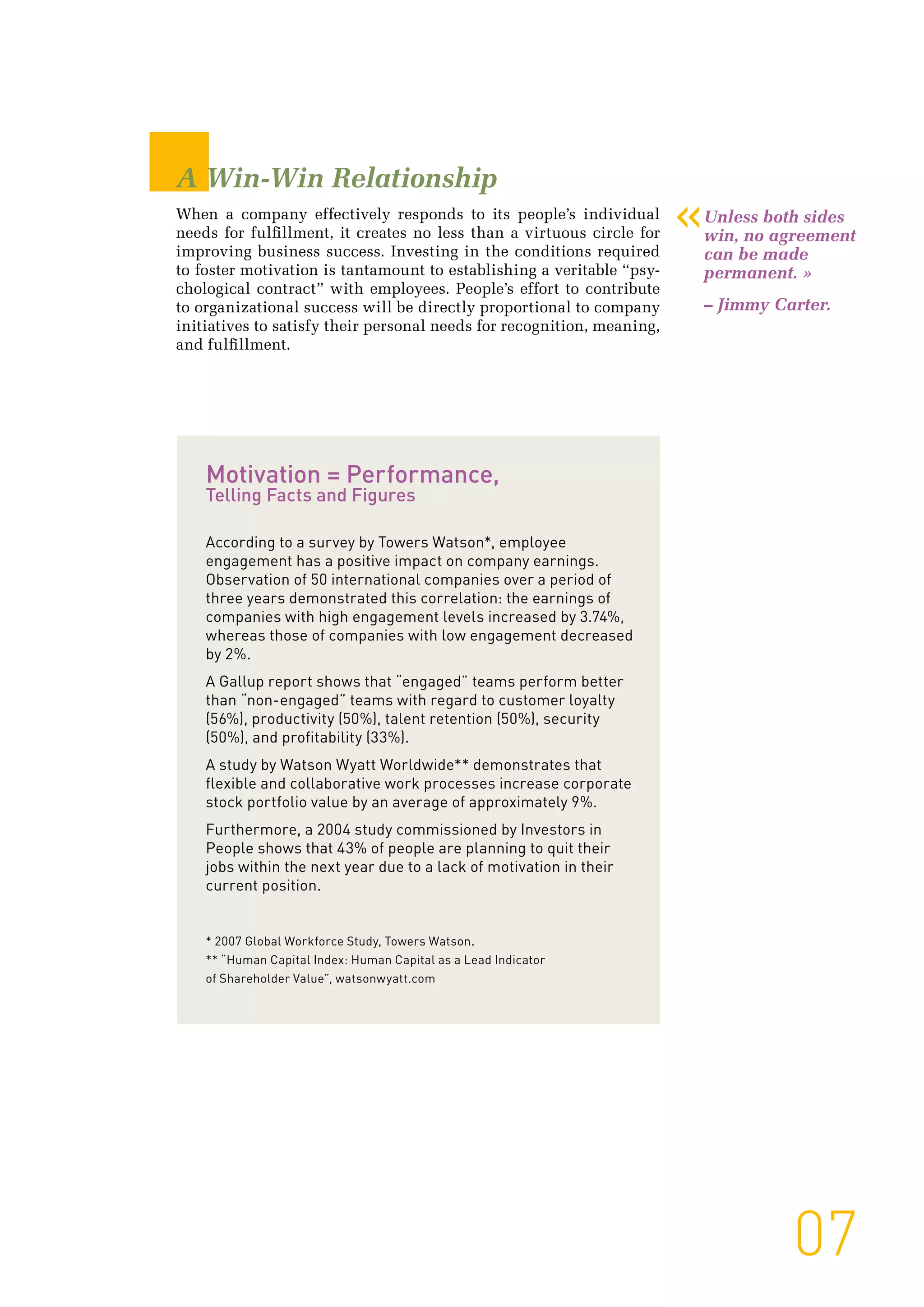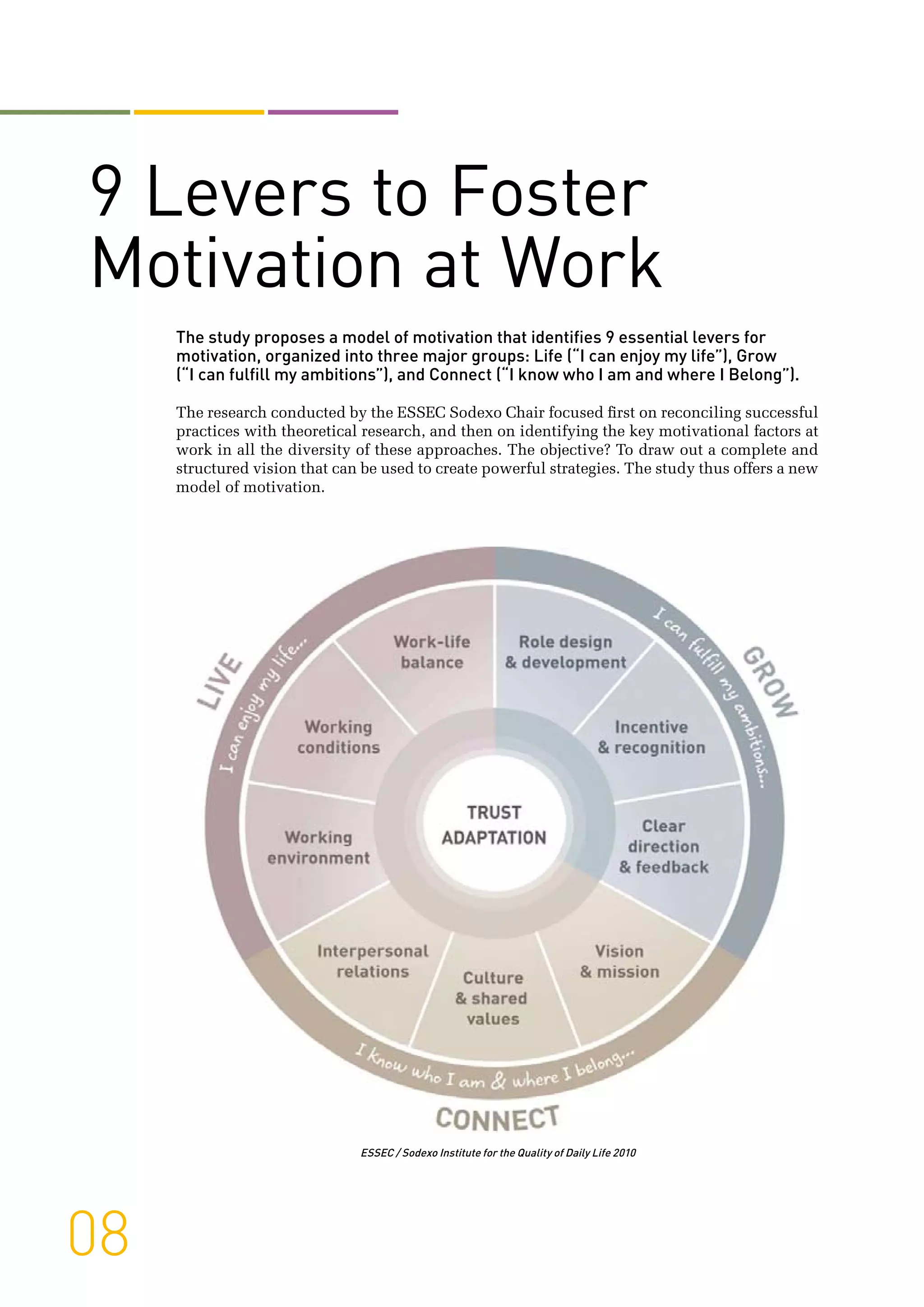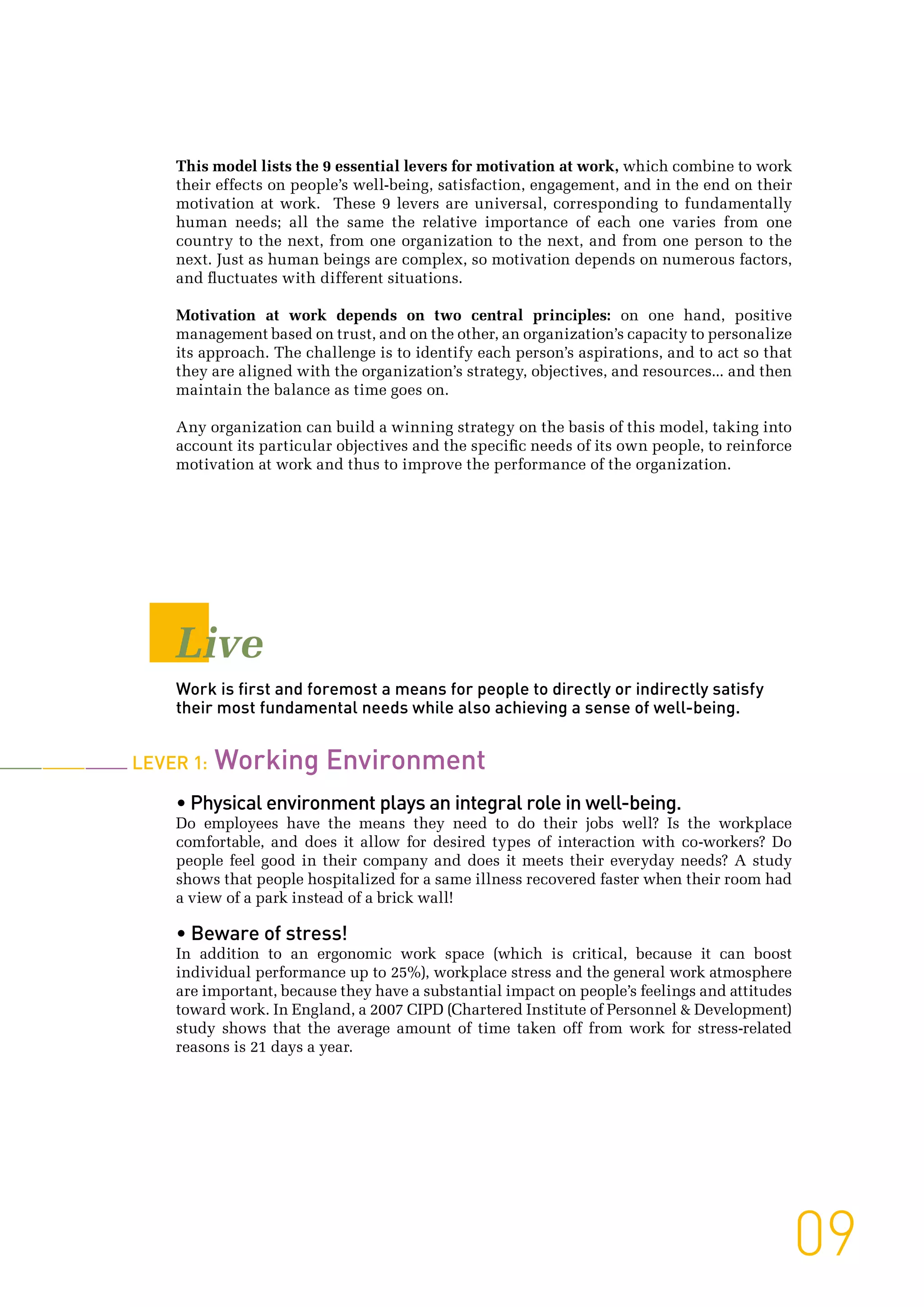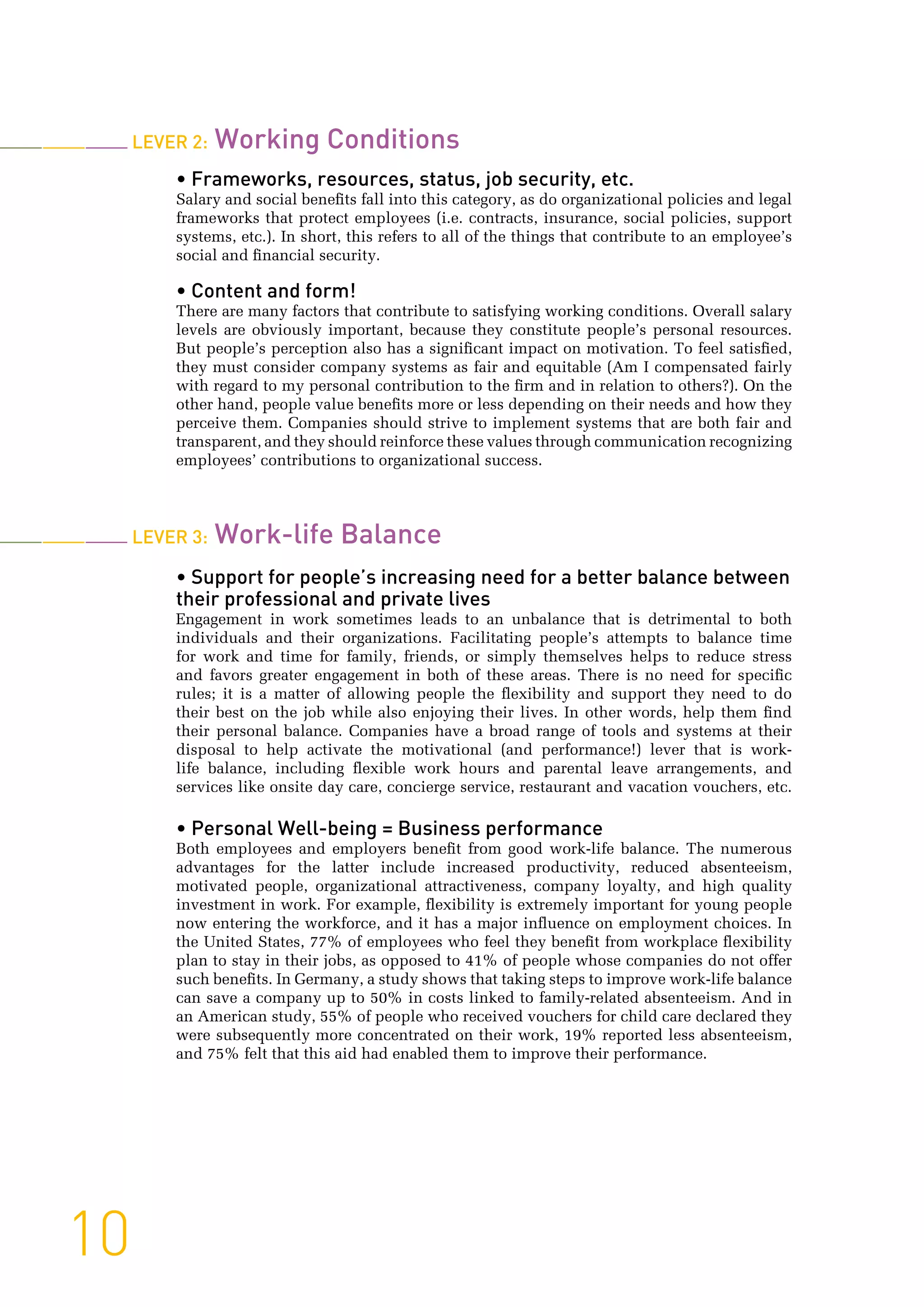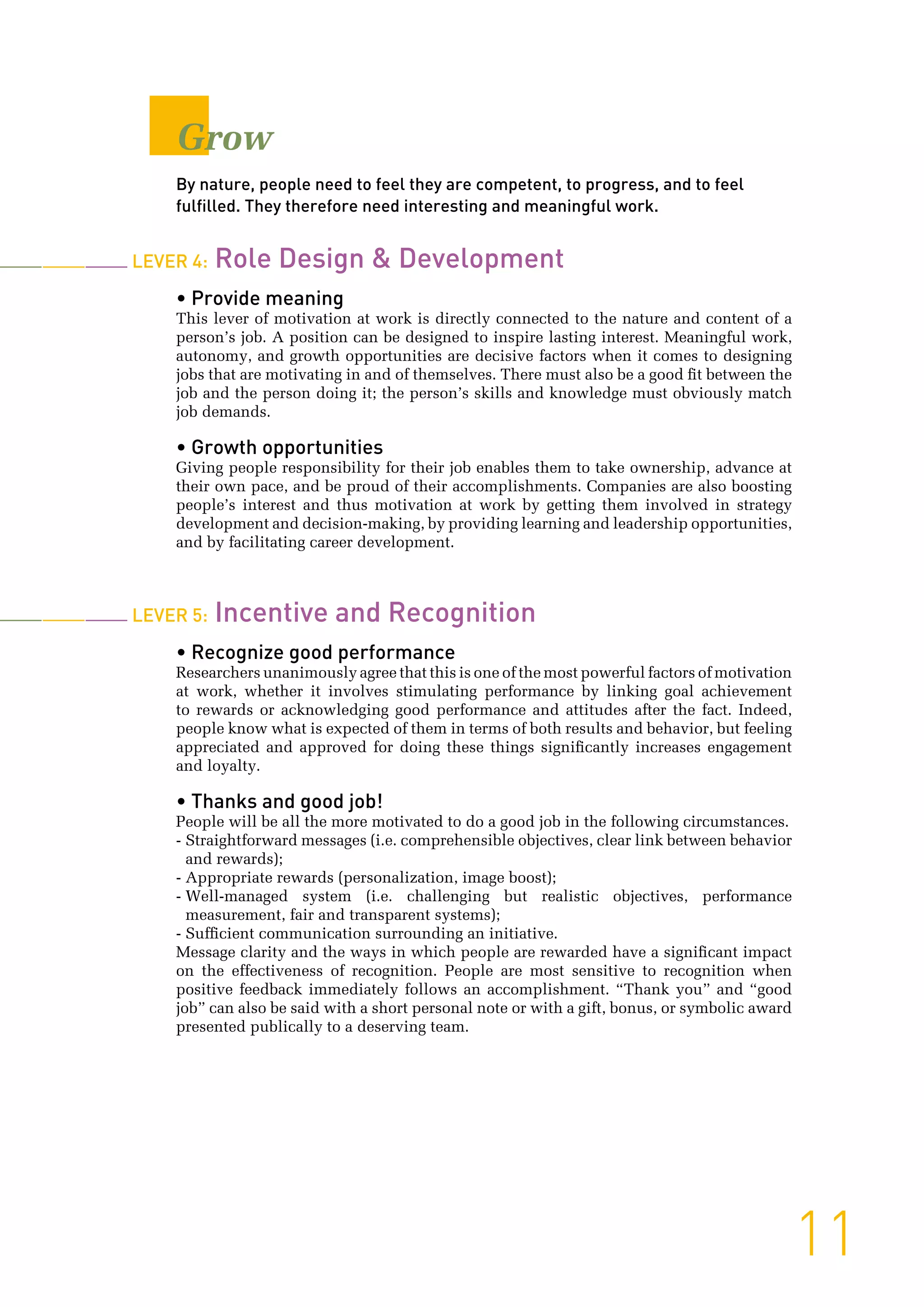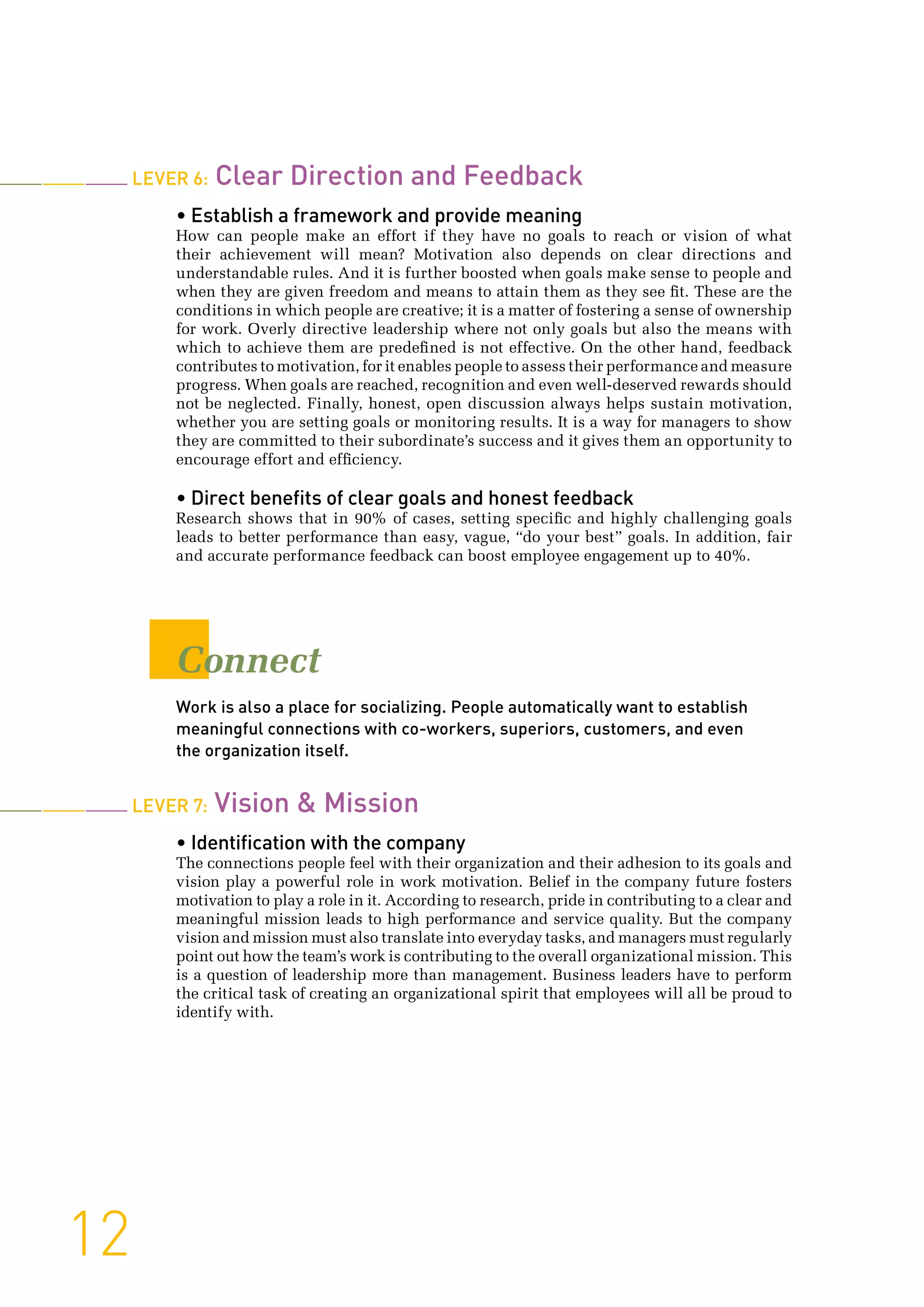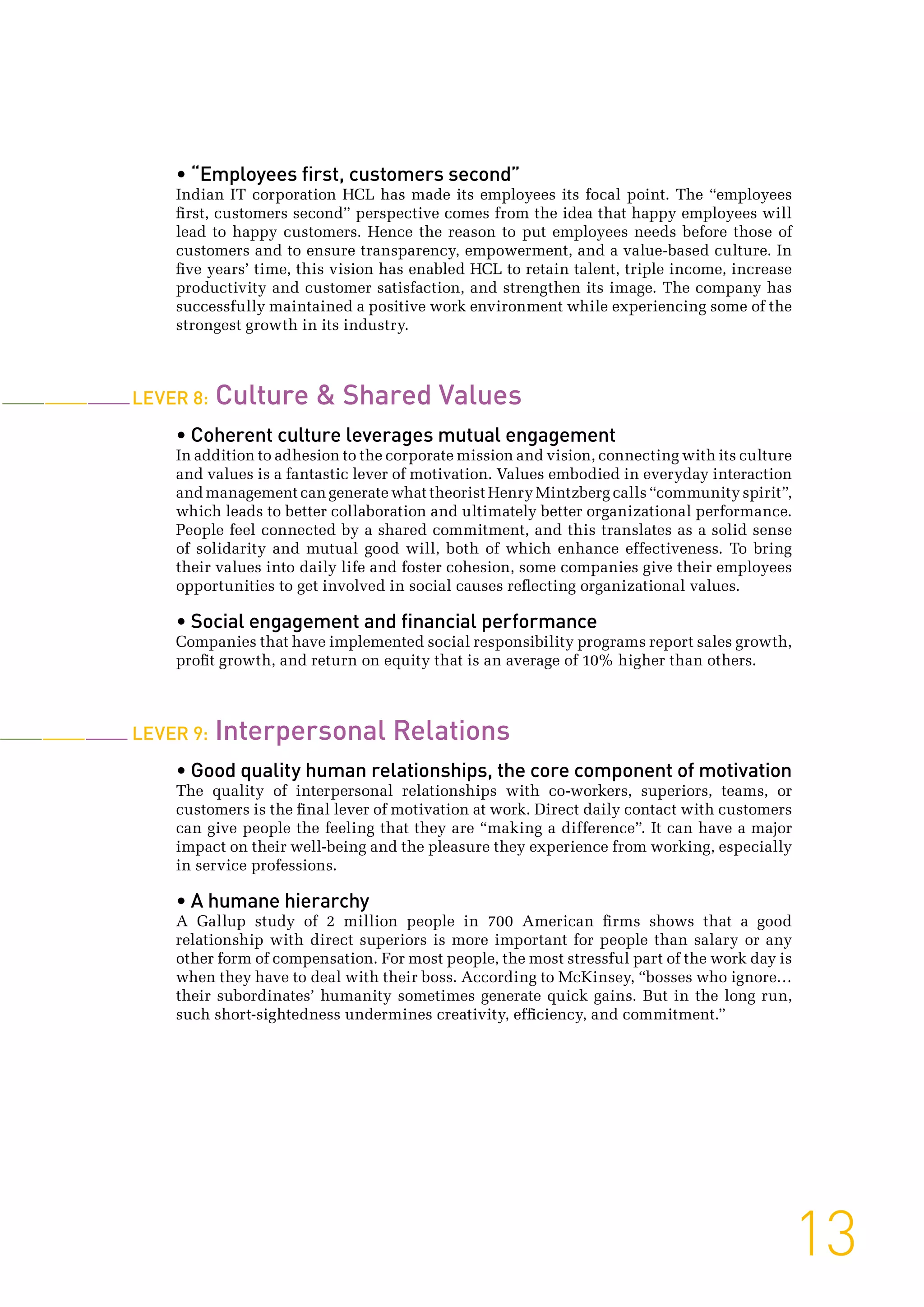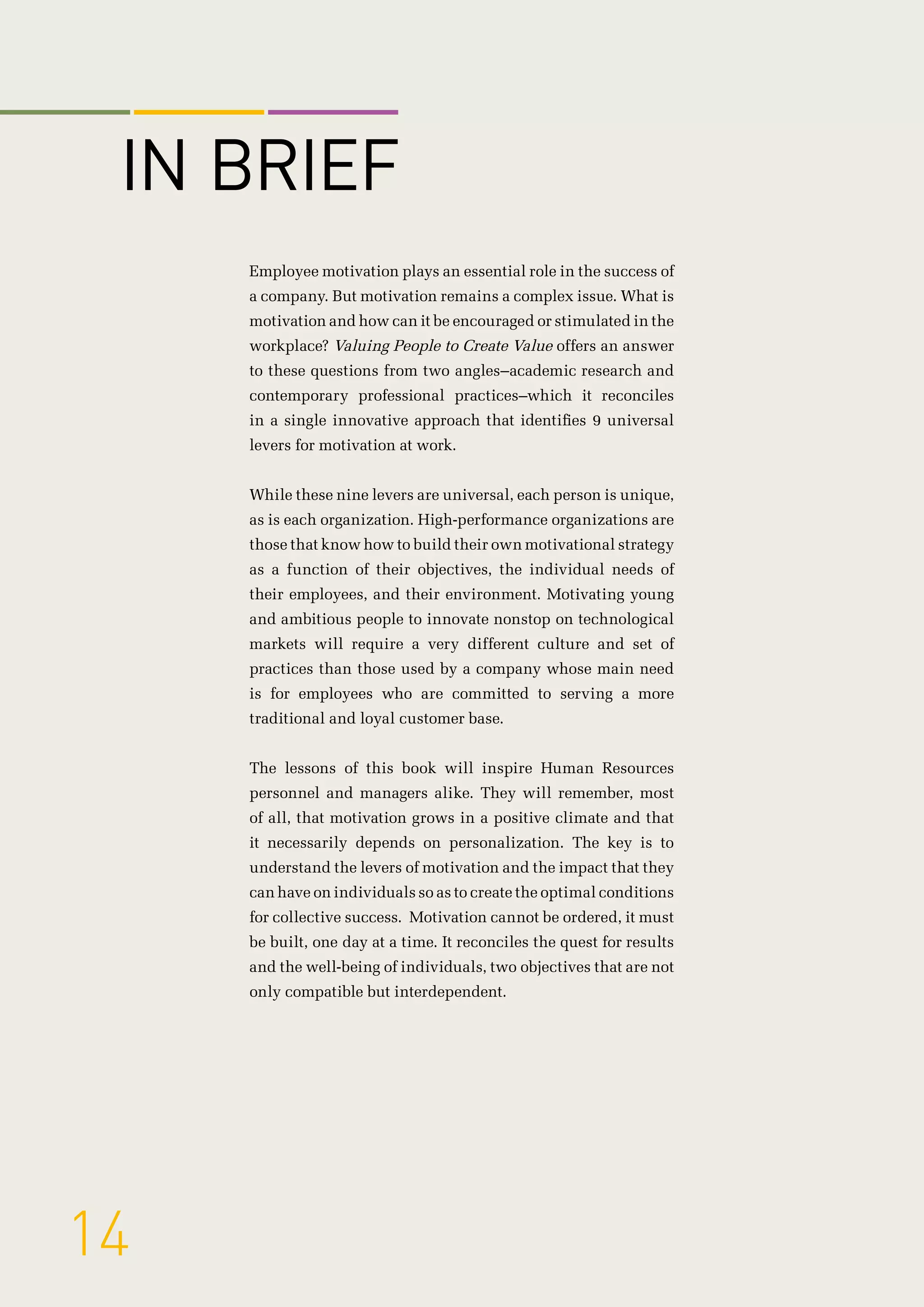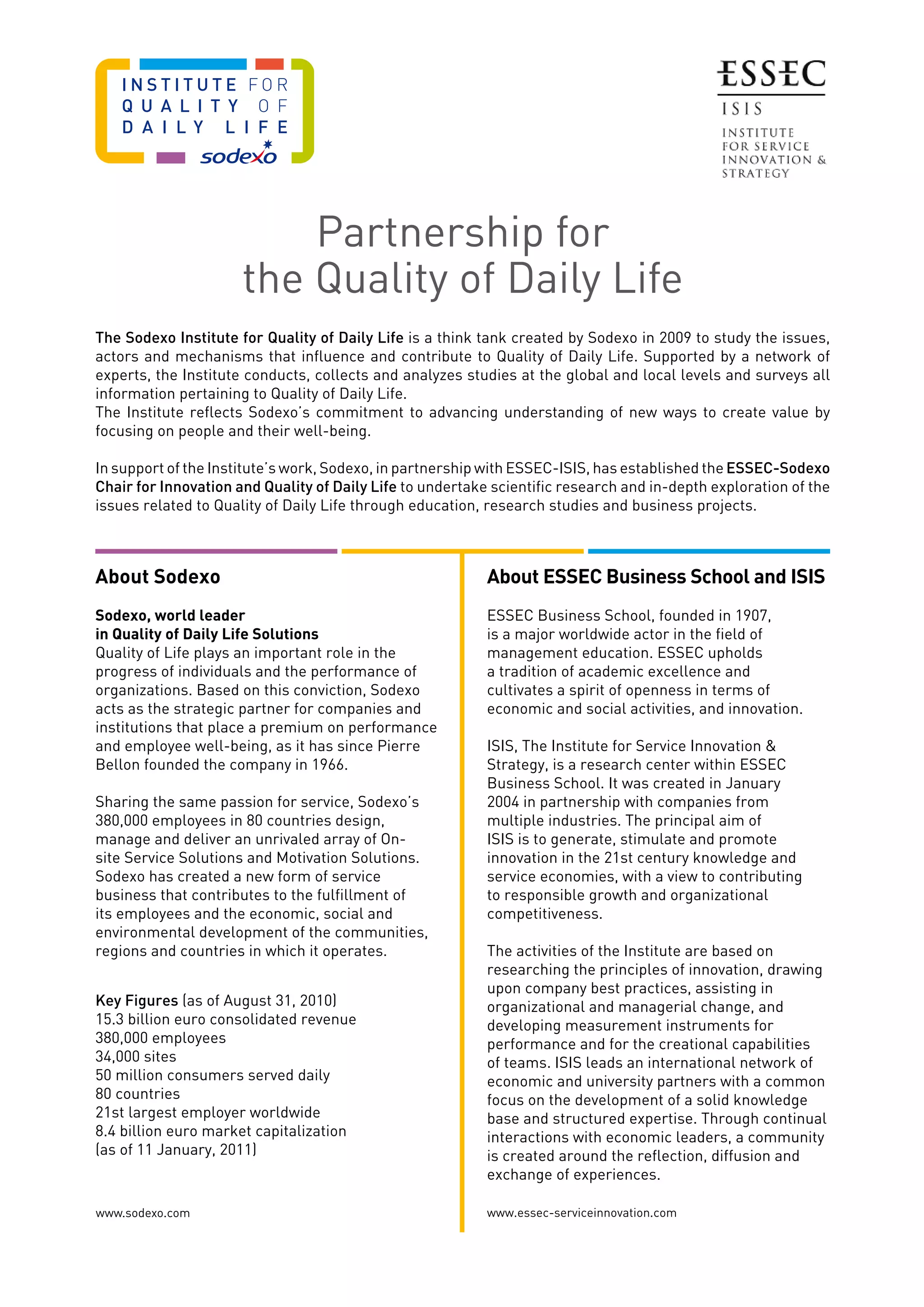This document summarizes a study on motivating employees in the workplace. It identifies 9 key levers for motivation grouped into 3 categories: live, grow, and connect. The live category includes work environment, working conditions, and work-life balance. The grow category covers career development, recognition, and responsibility. The connect category comprises team spirit and corporate culture/values. The study provides an innovative model for organizations to leverage these motivation factors to inspire long-term employee engagement and boost business performance.
